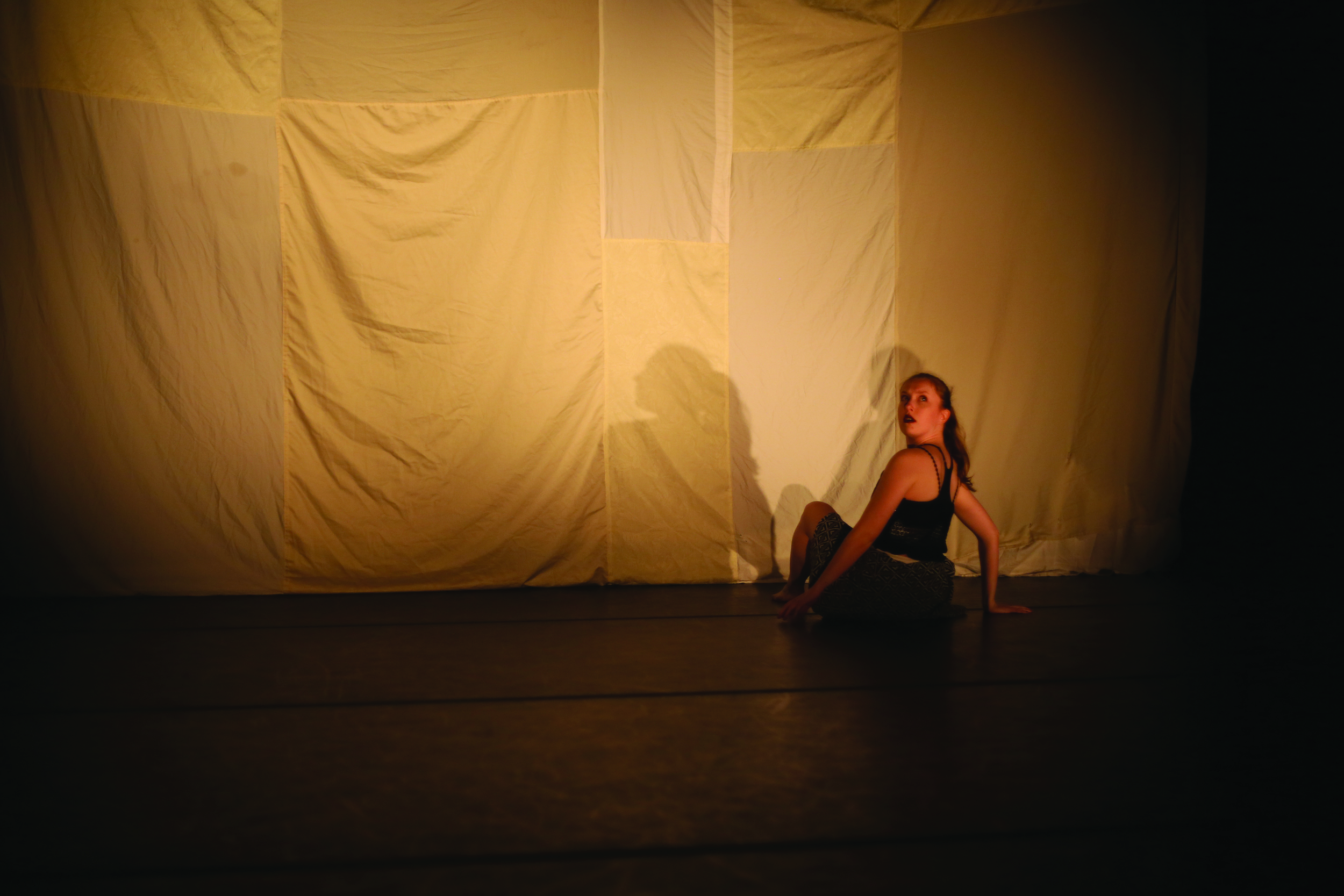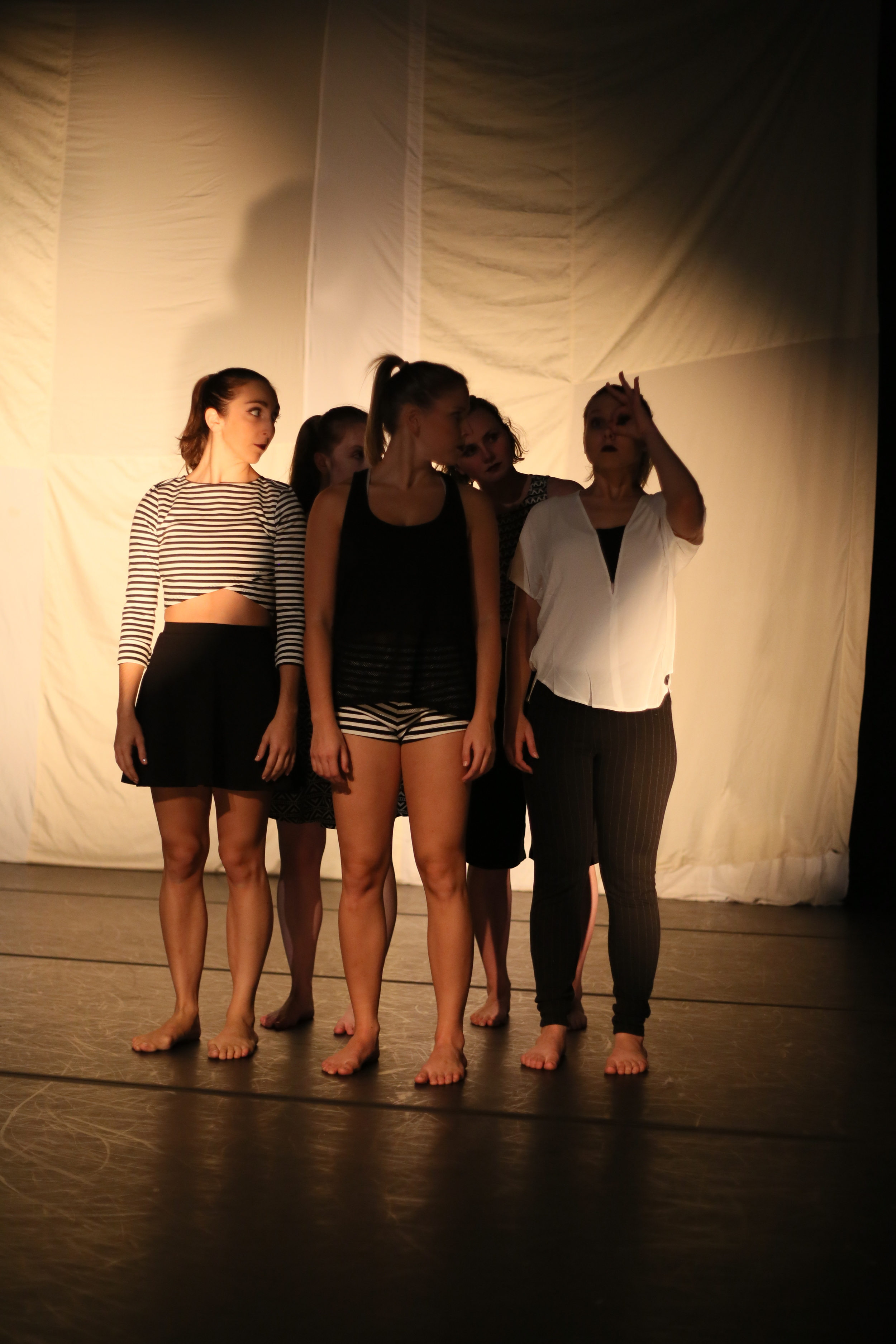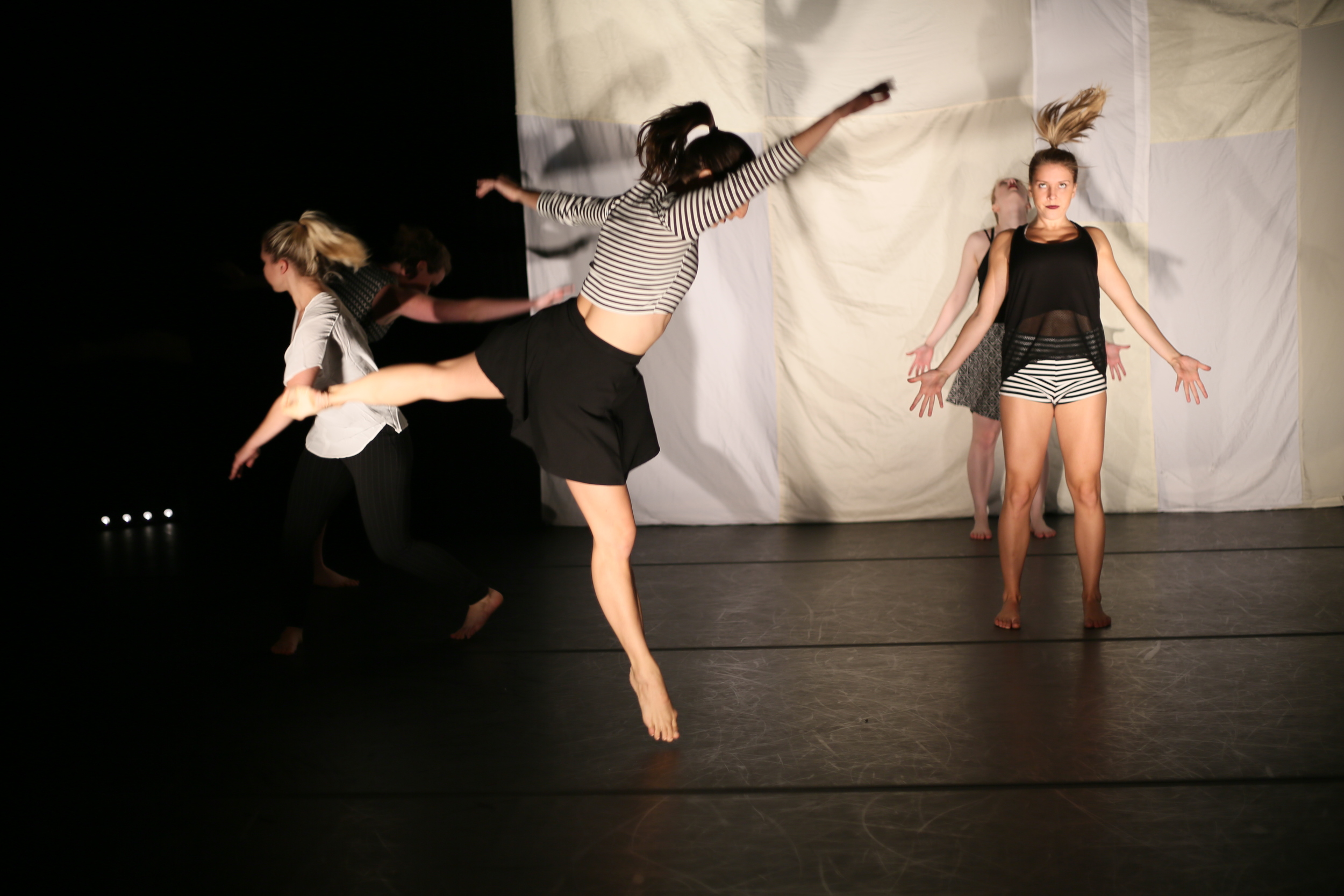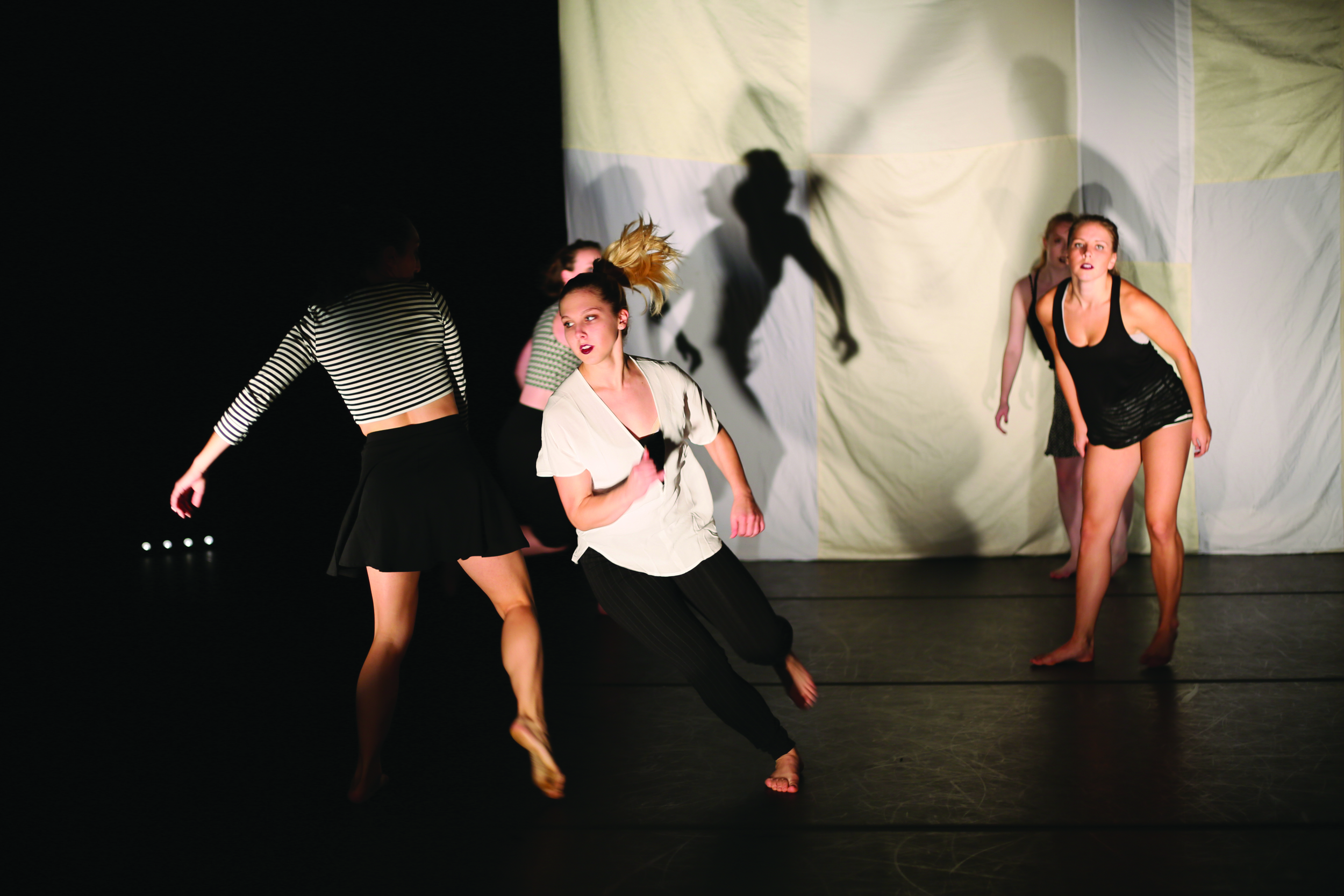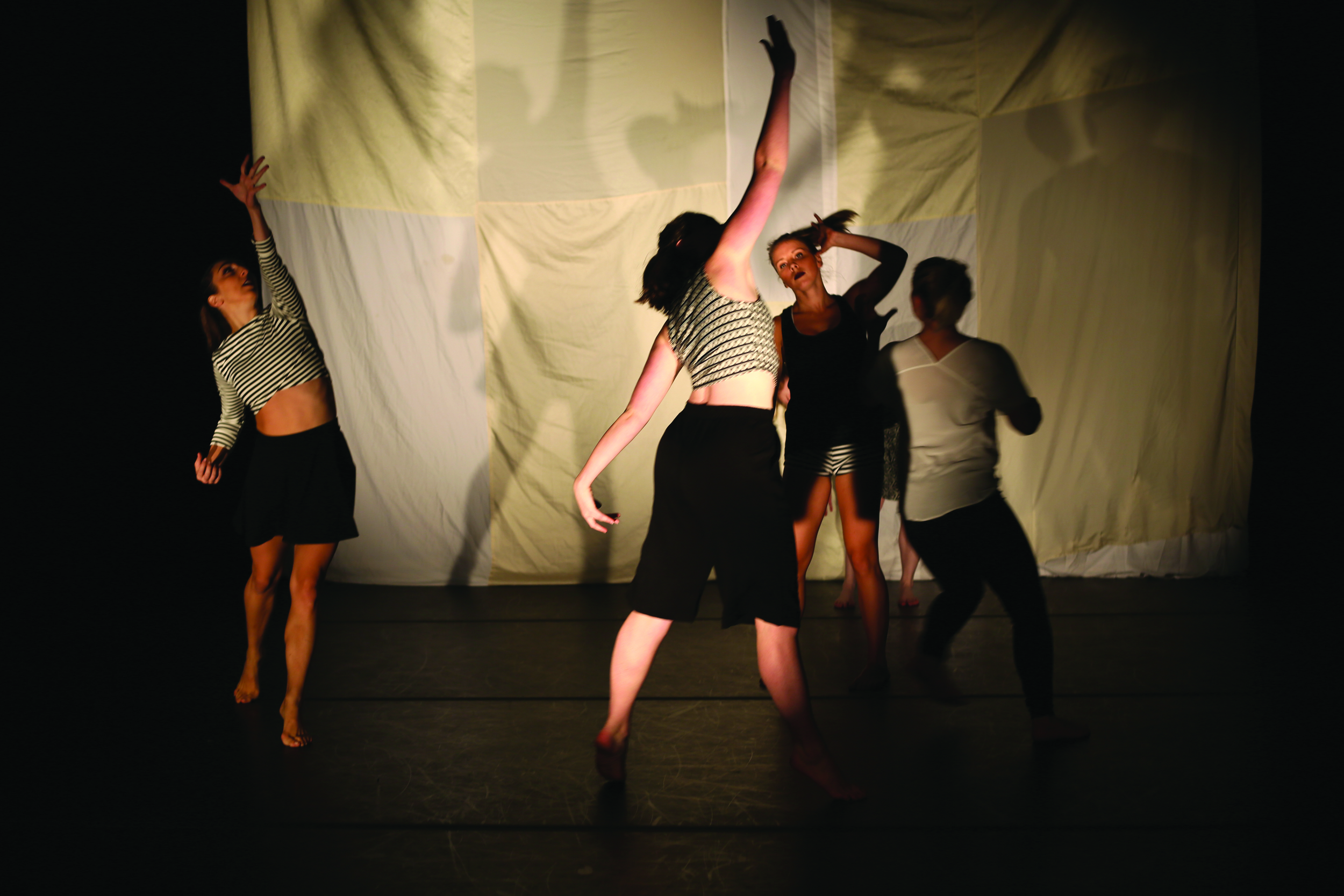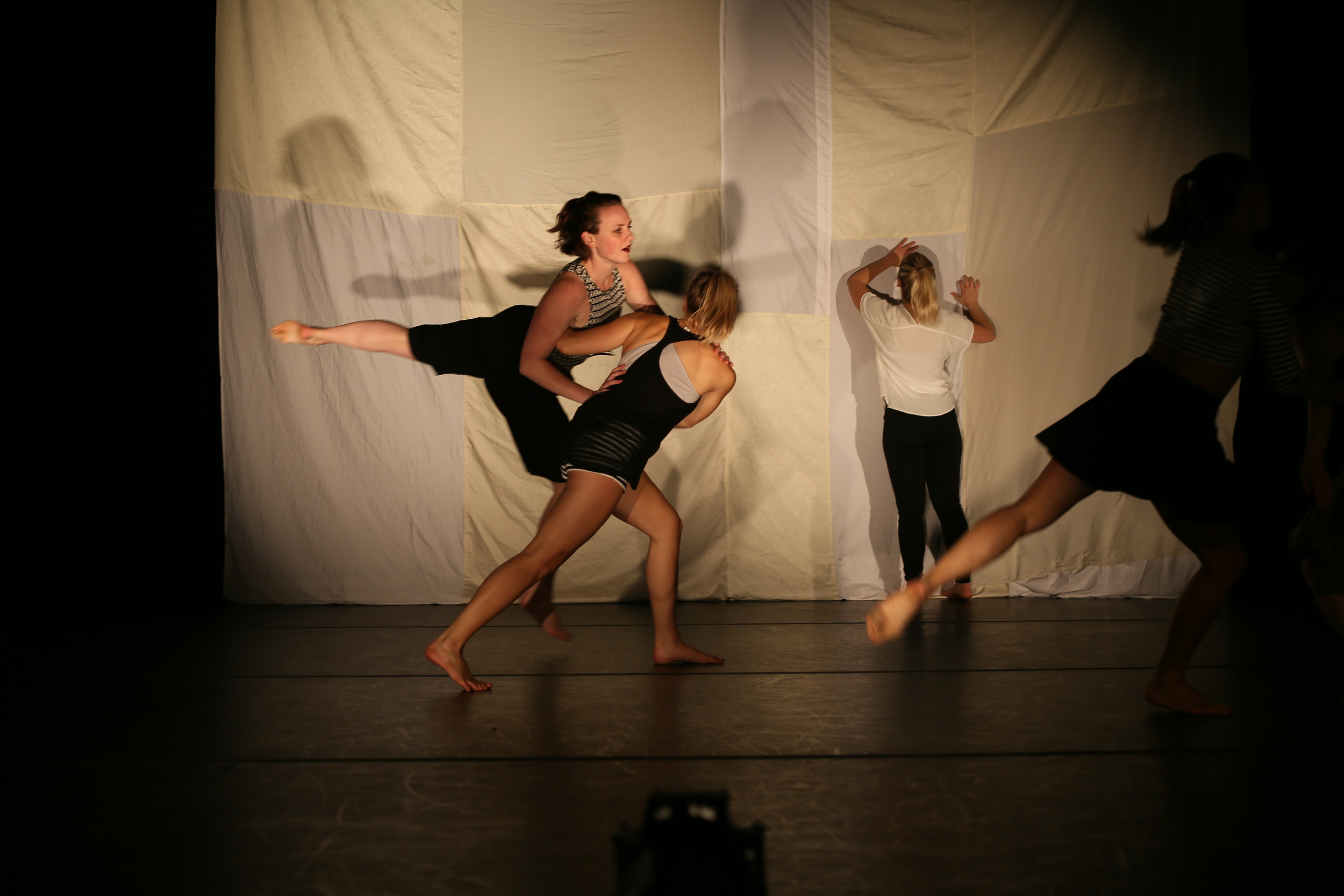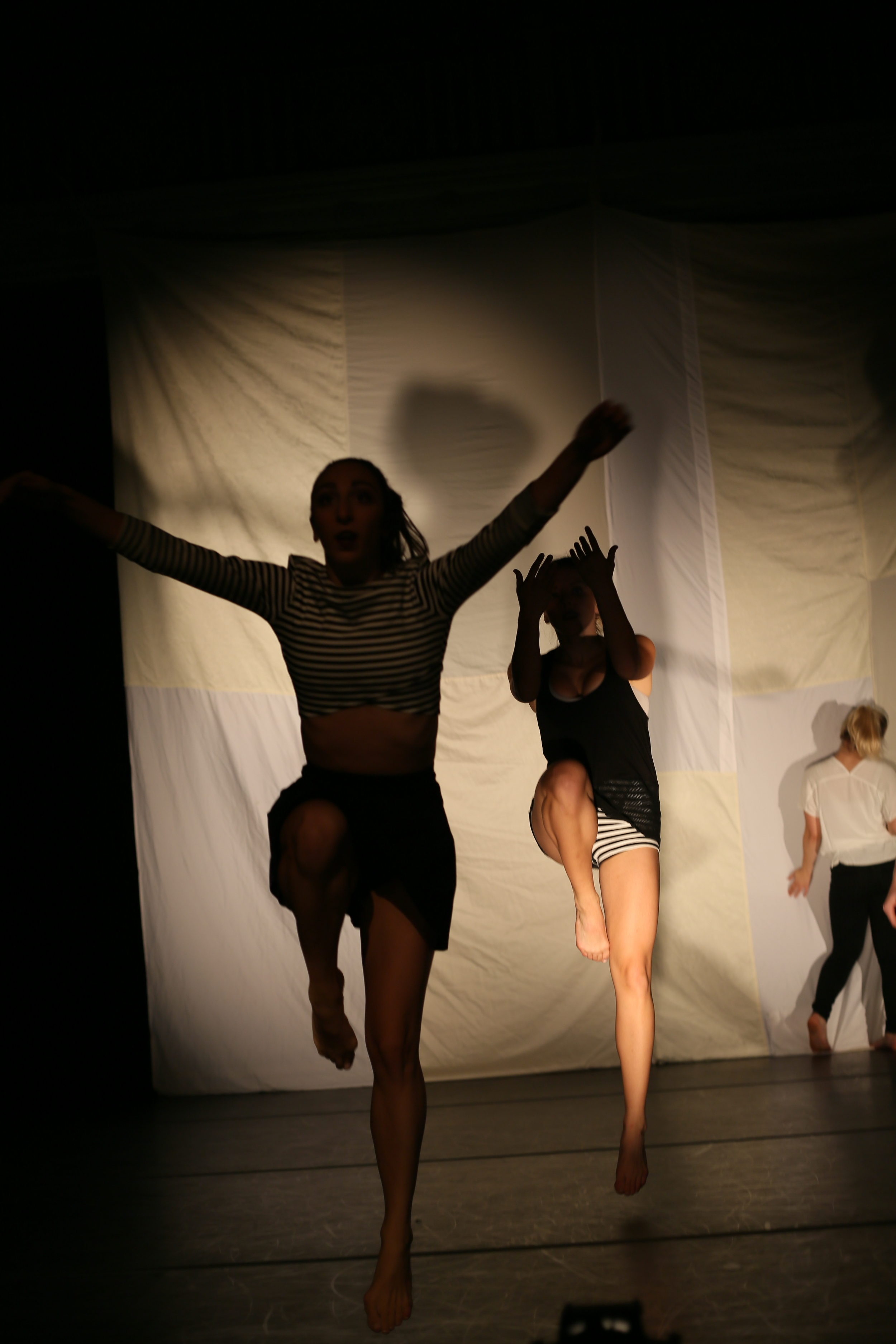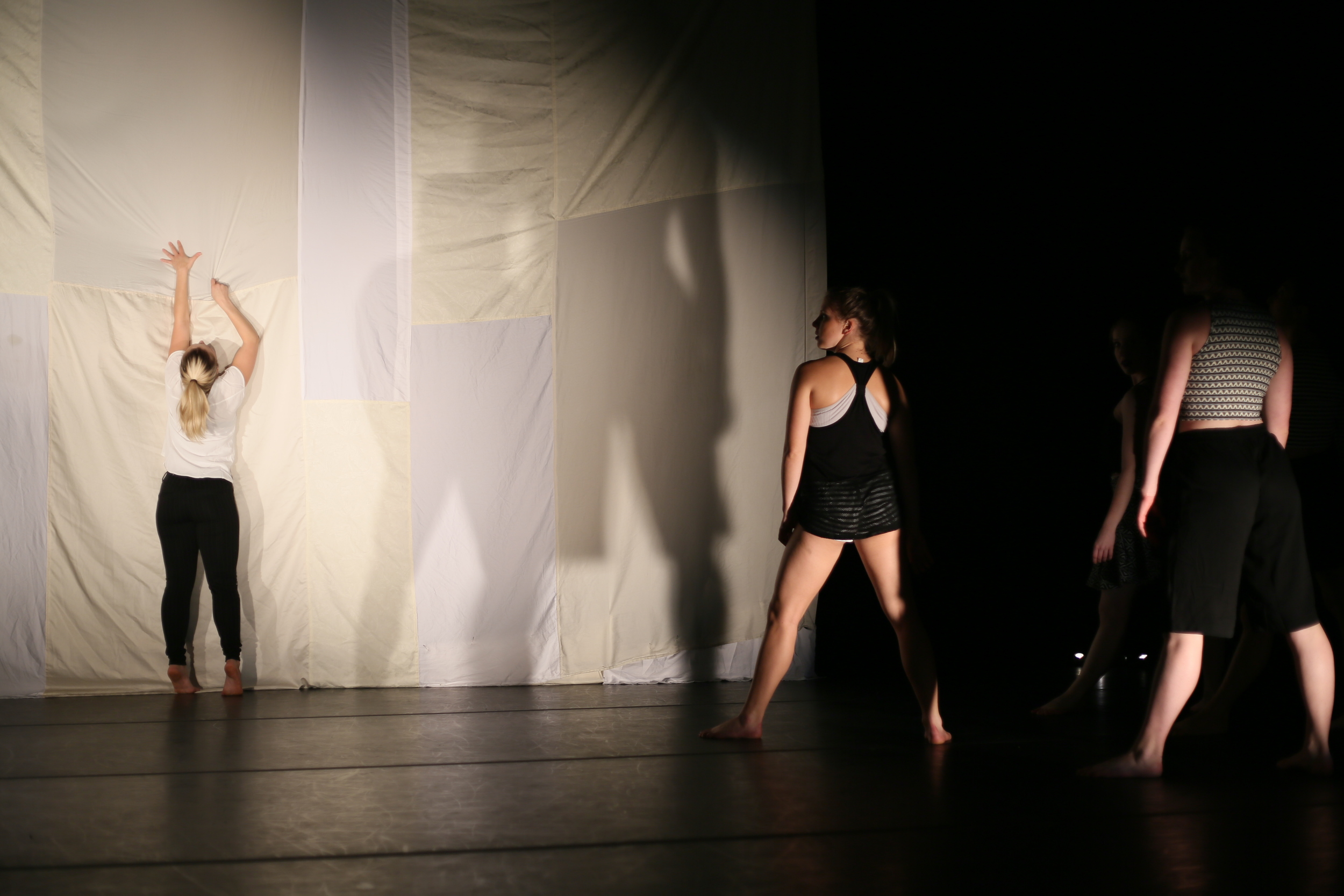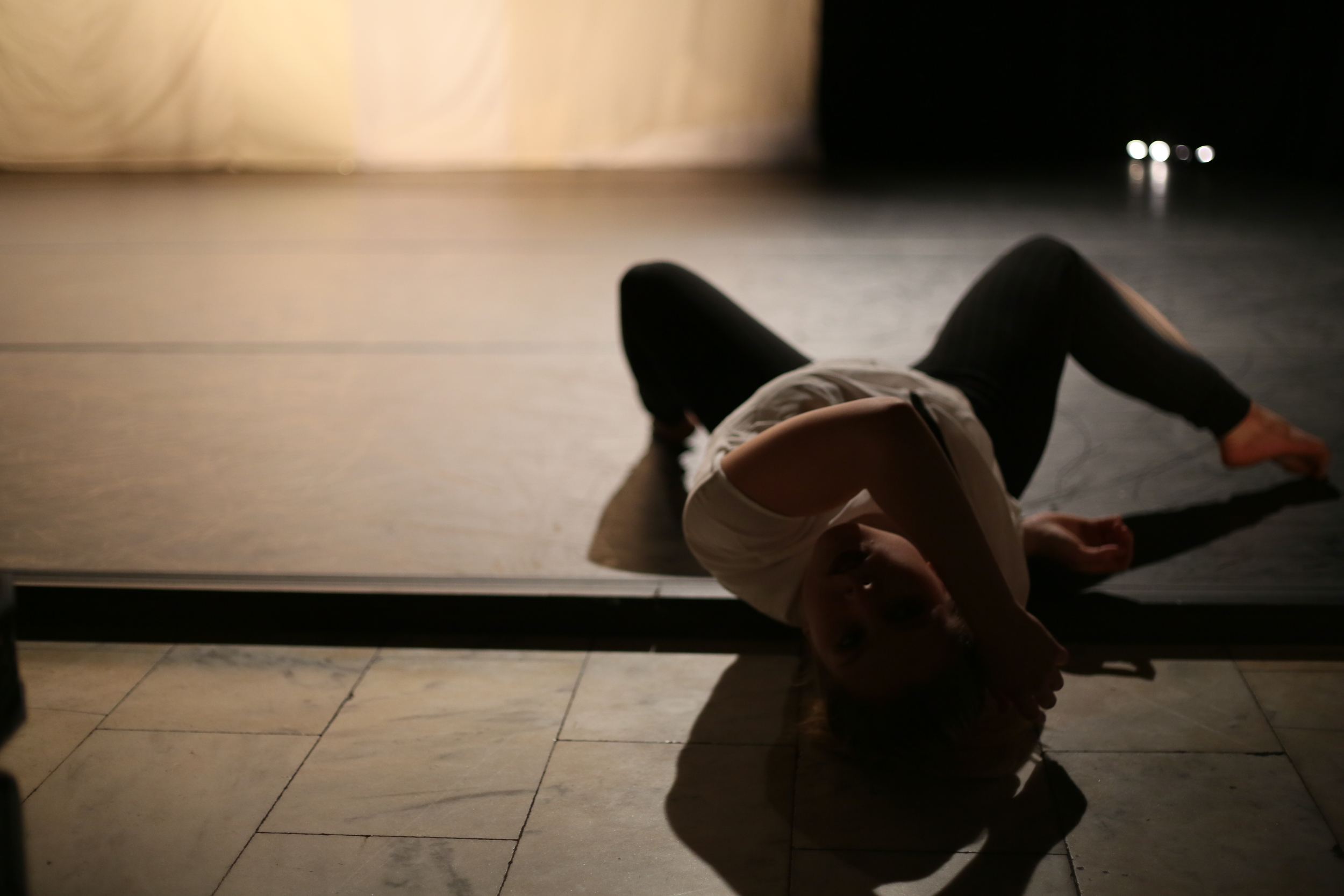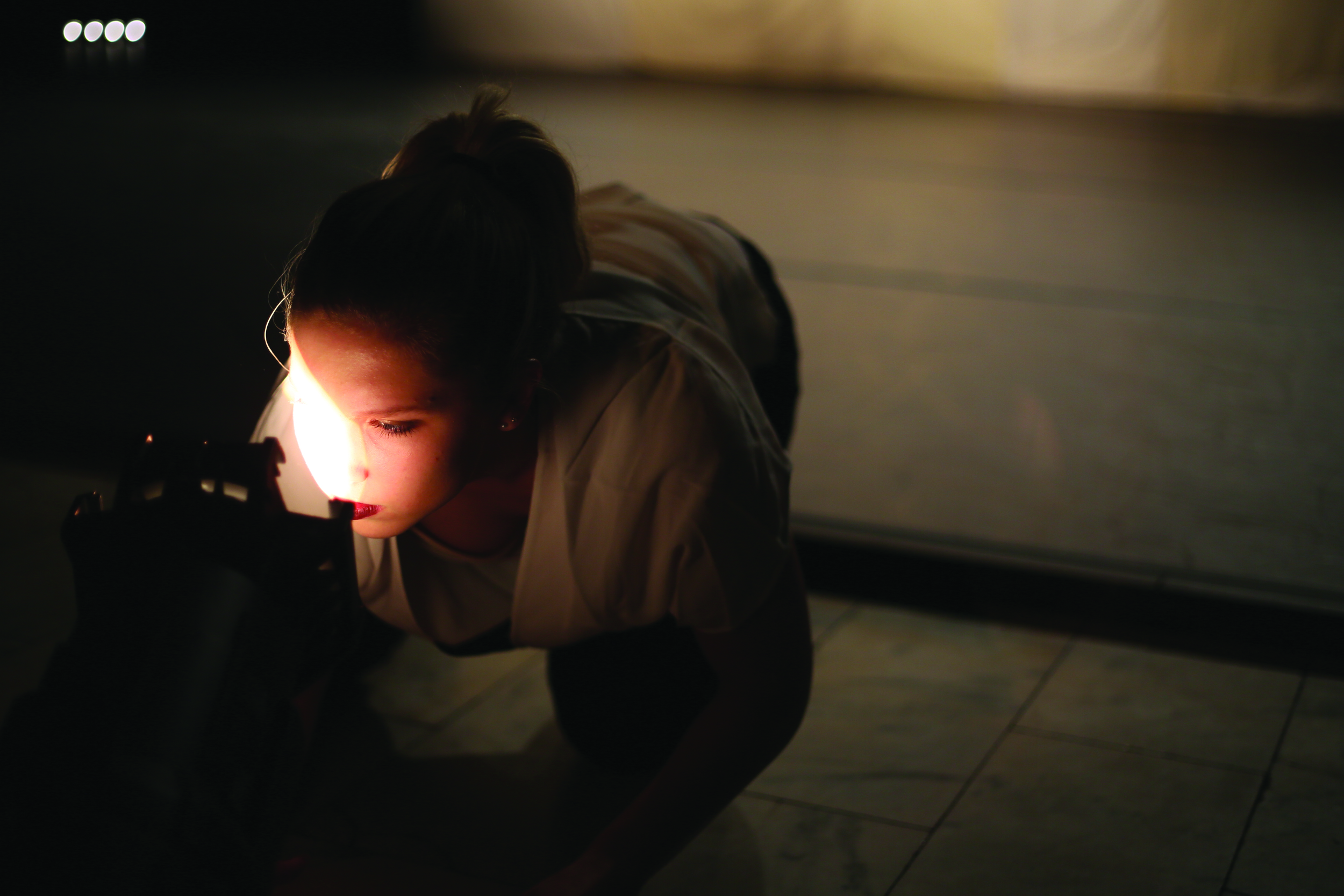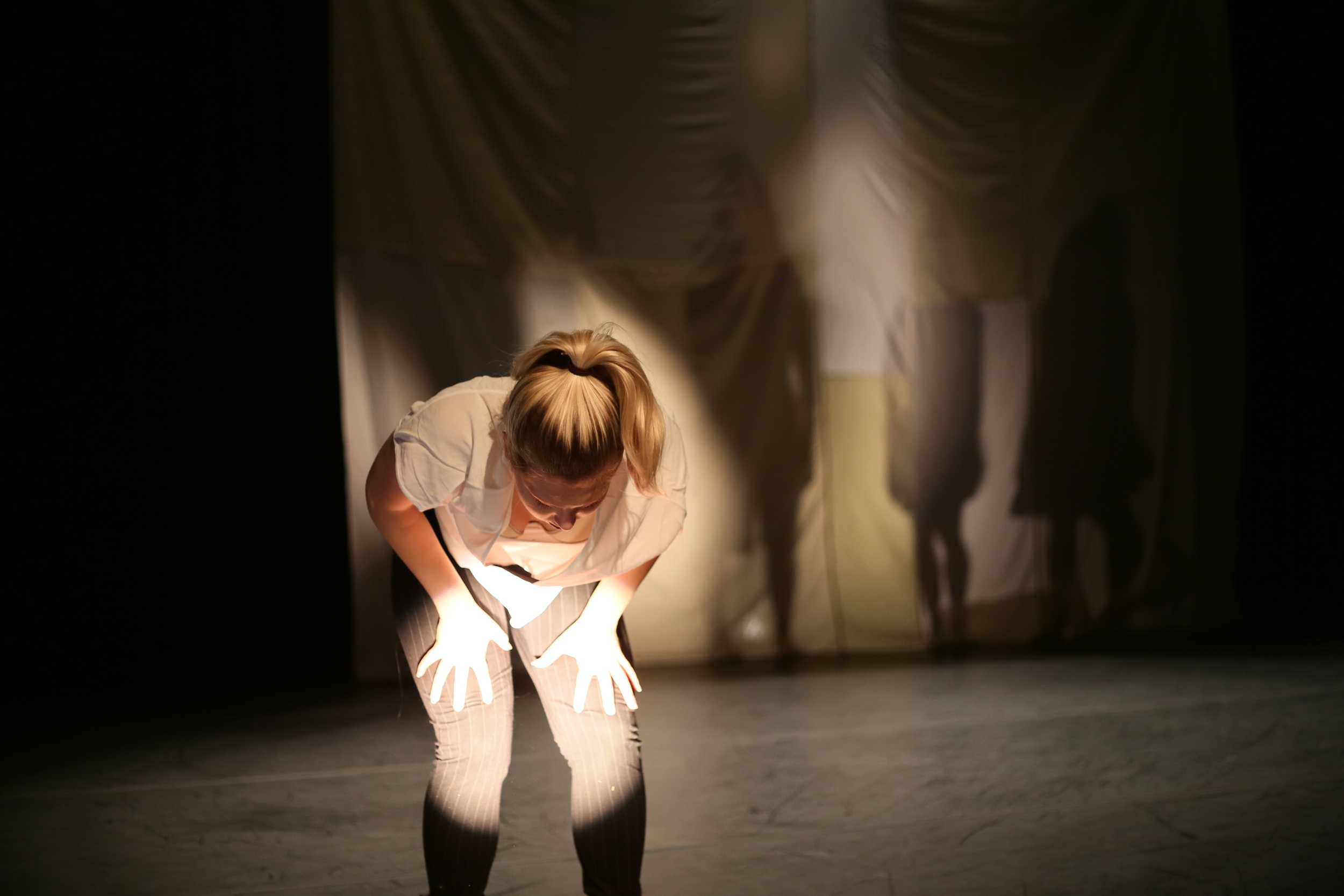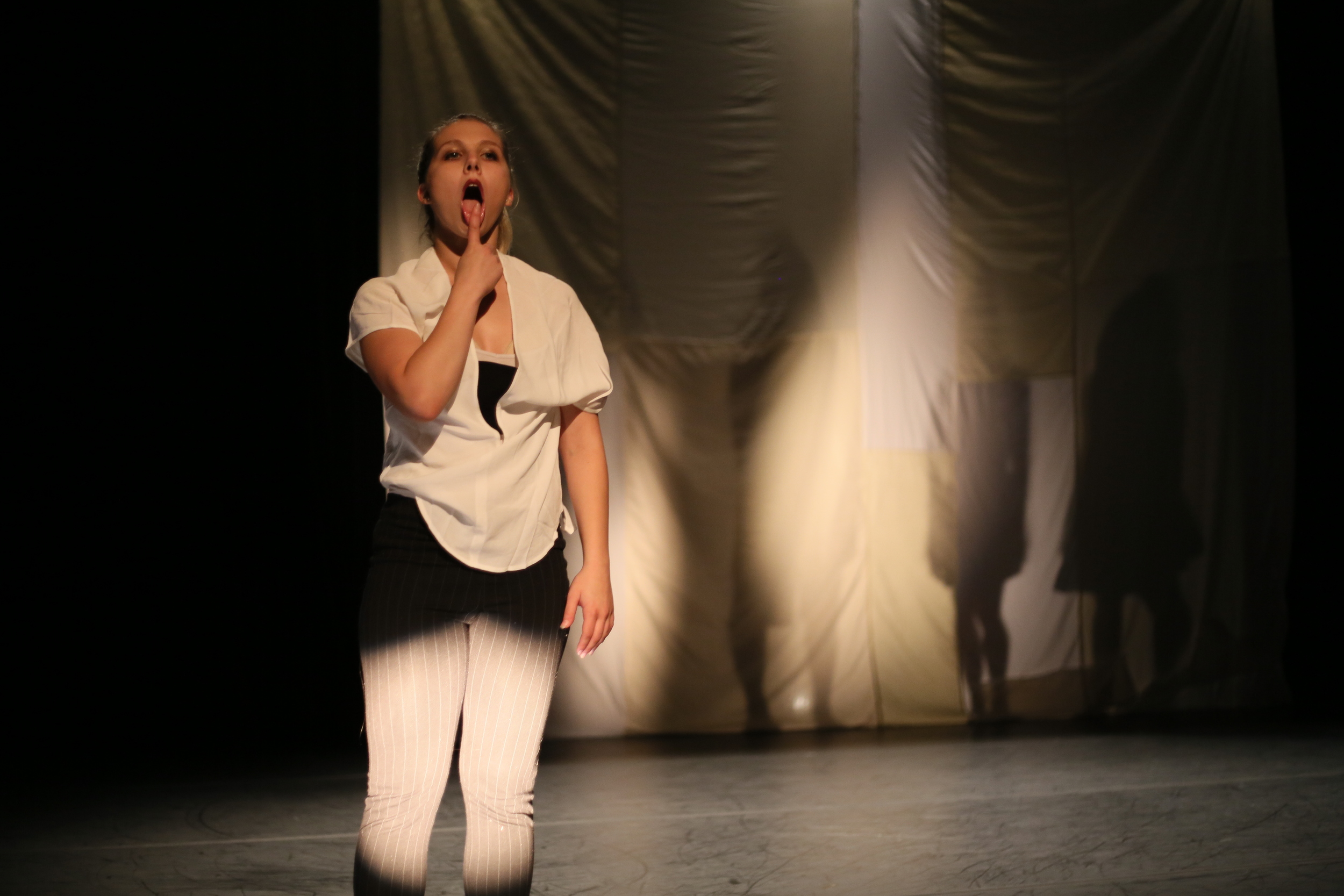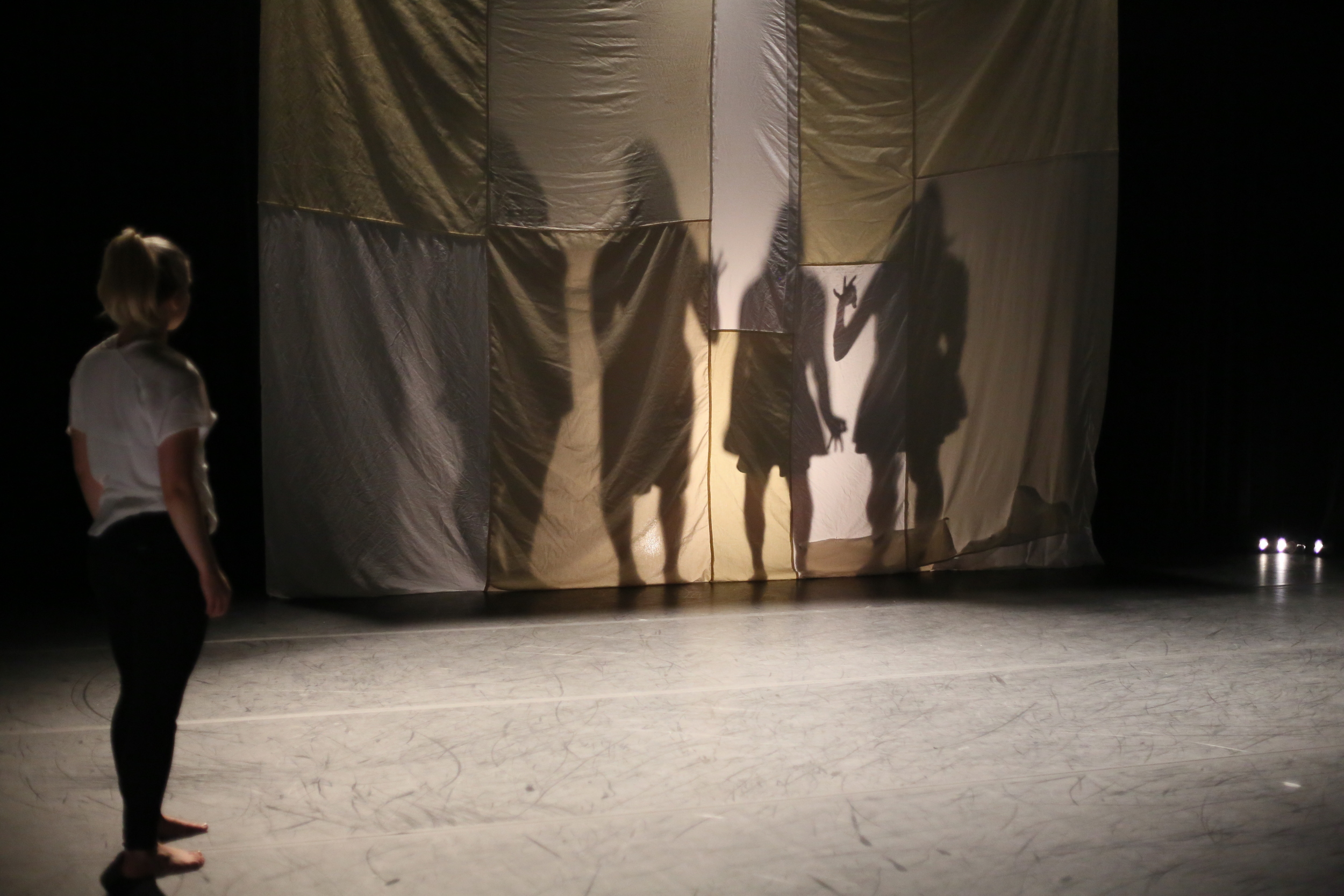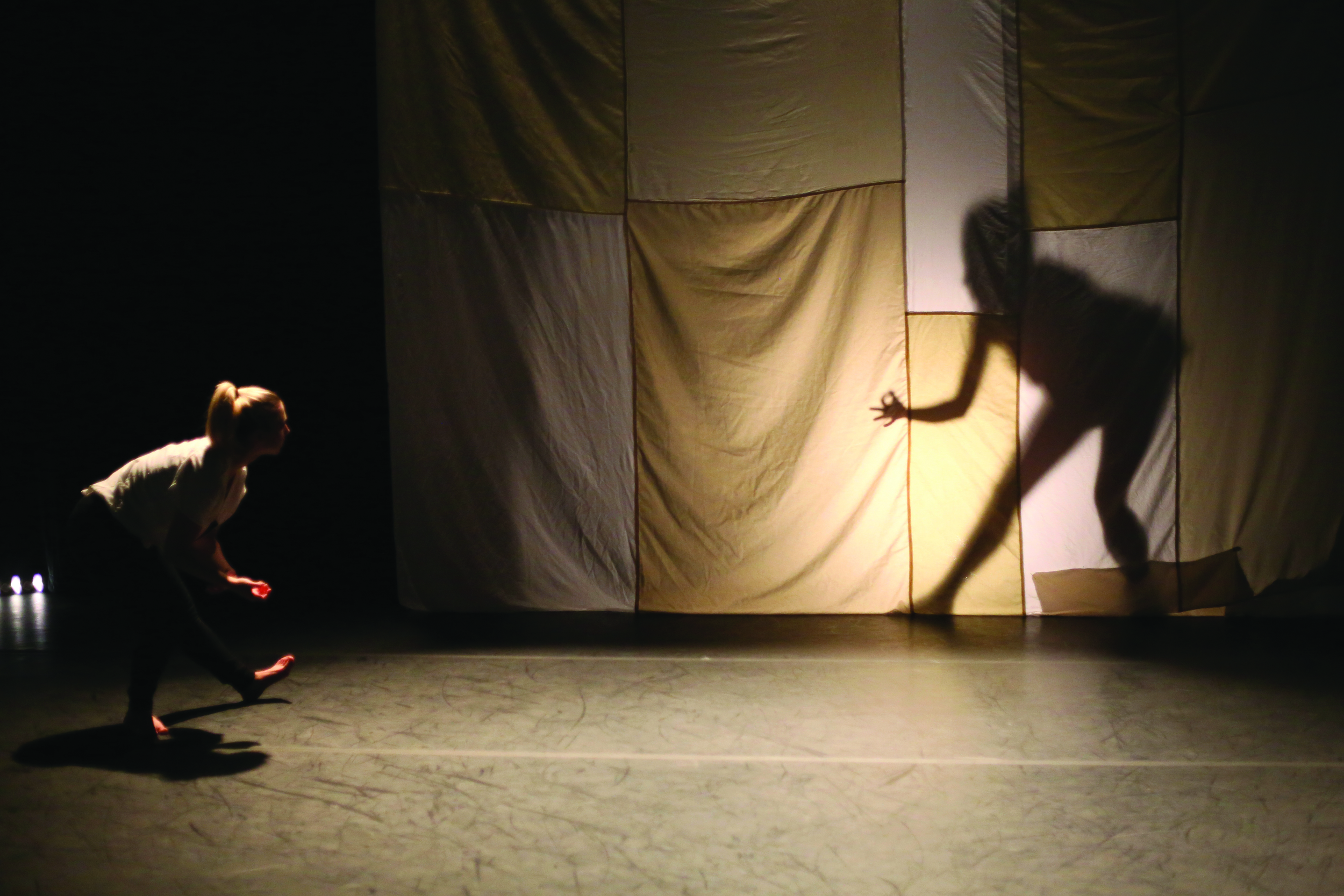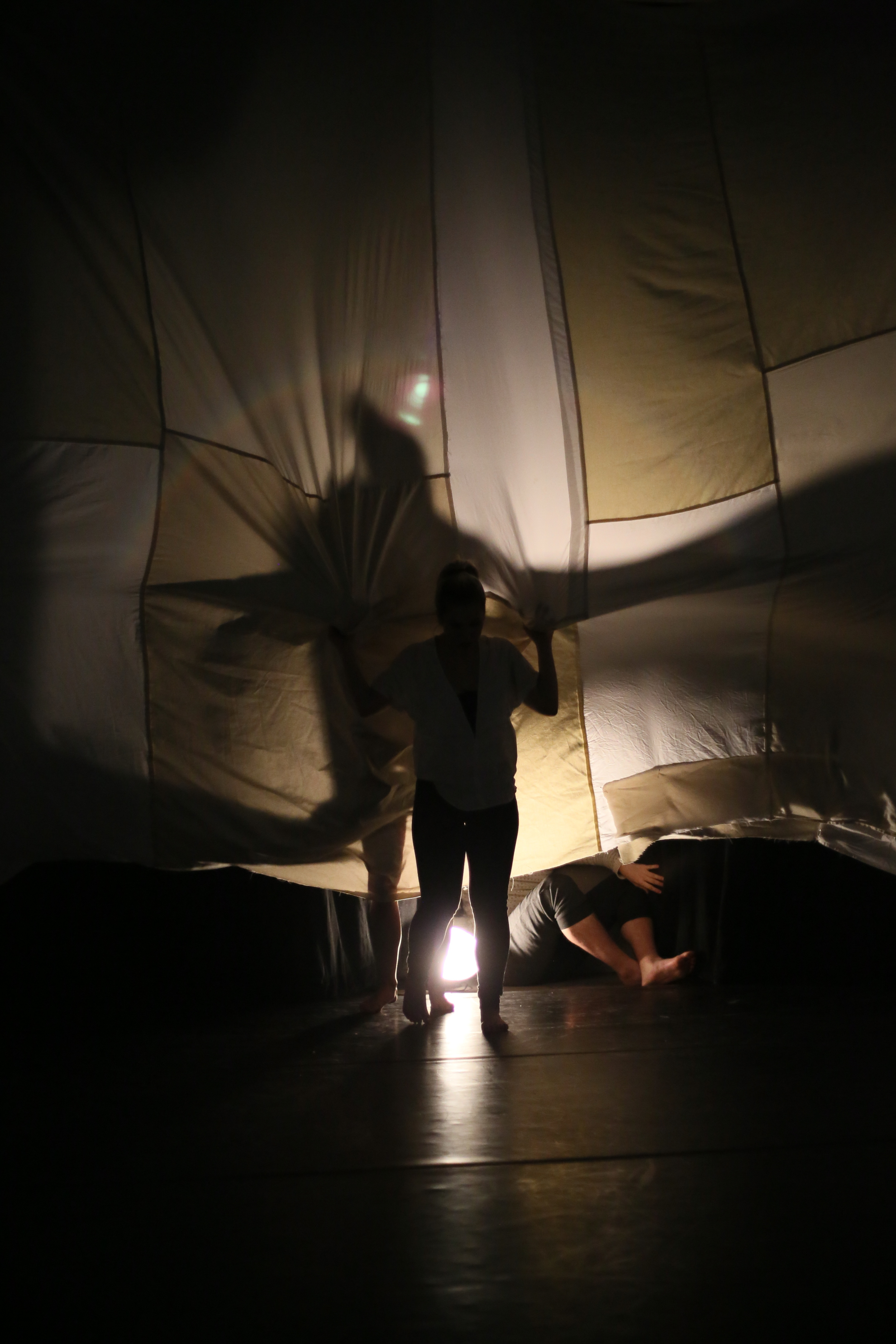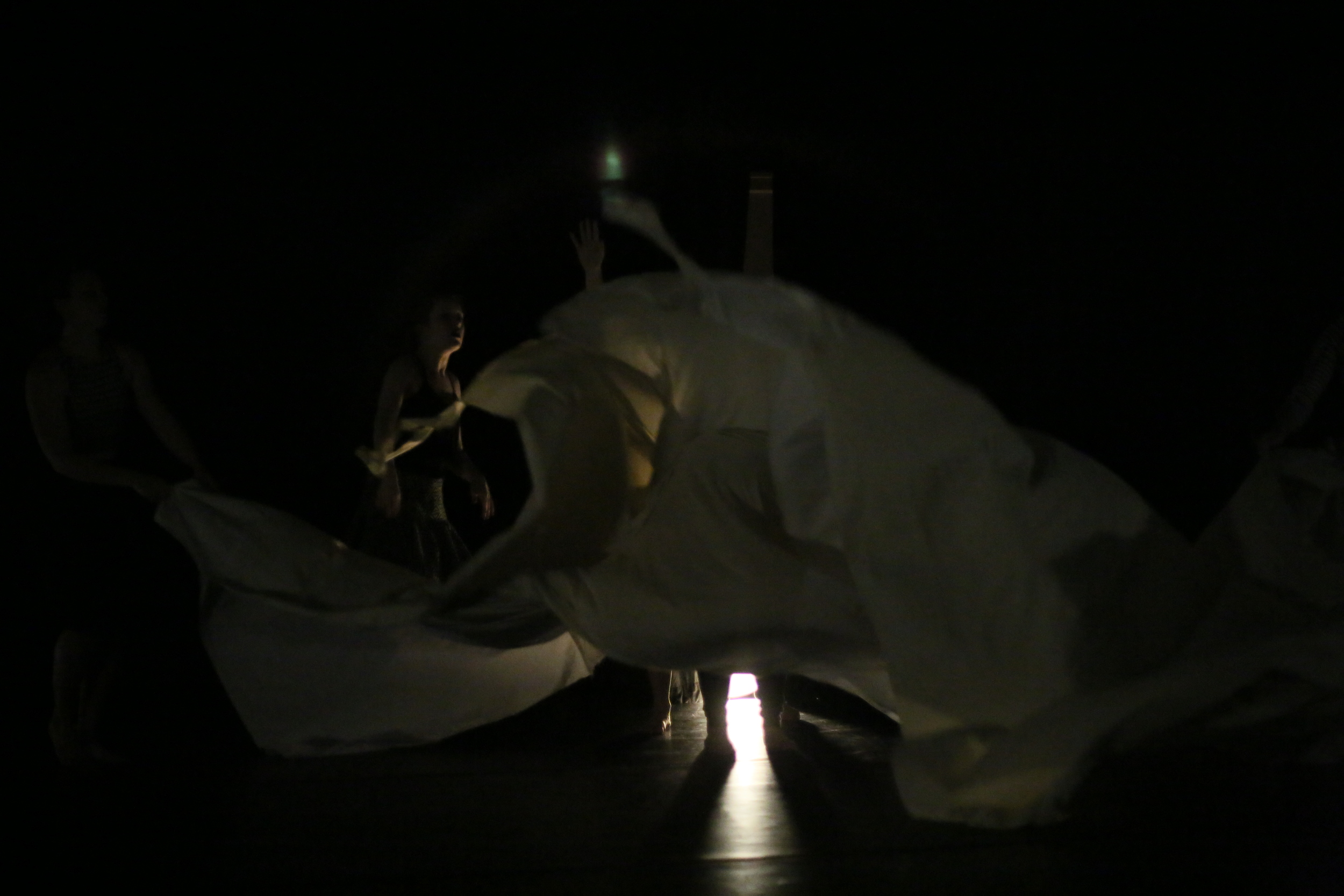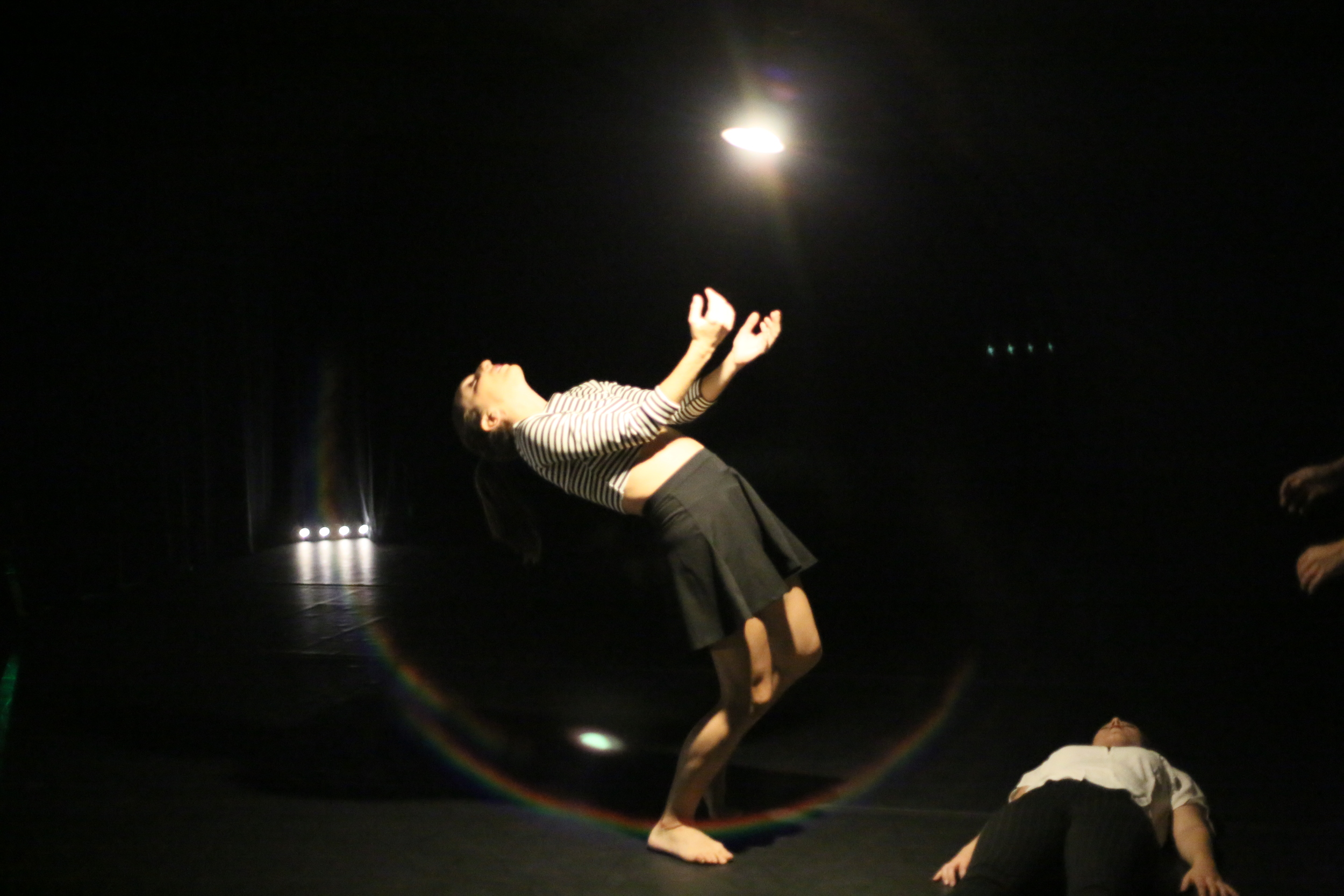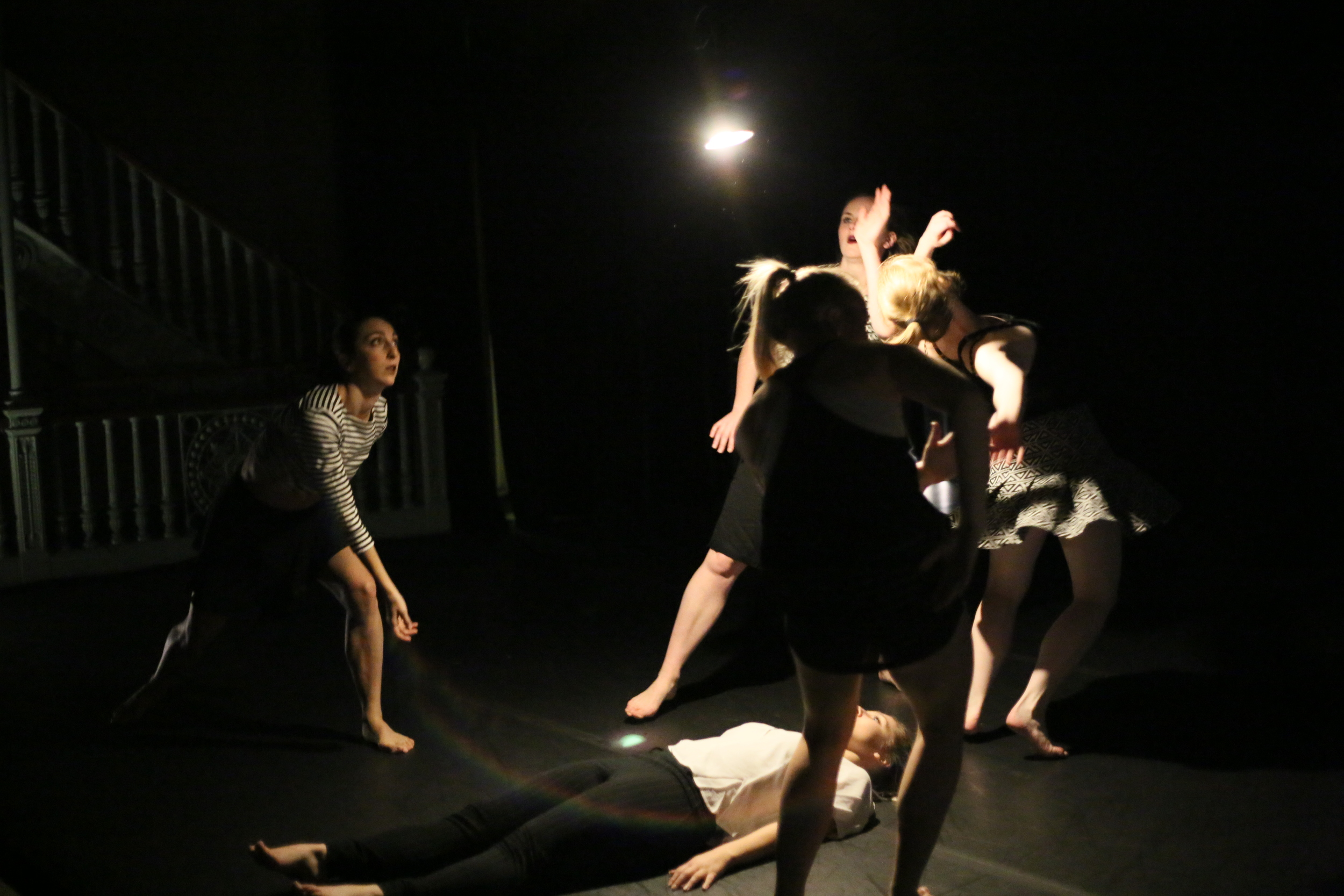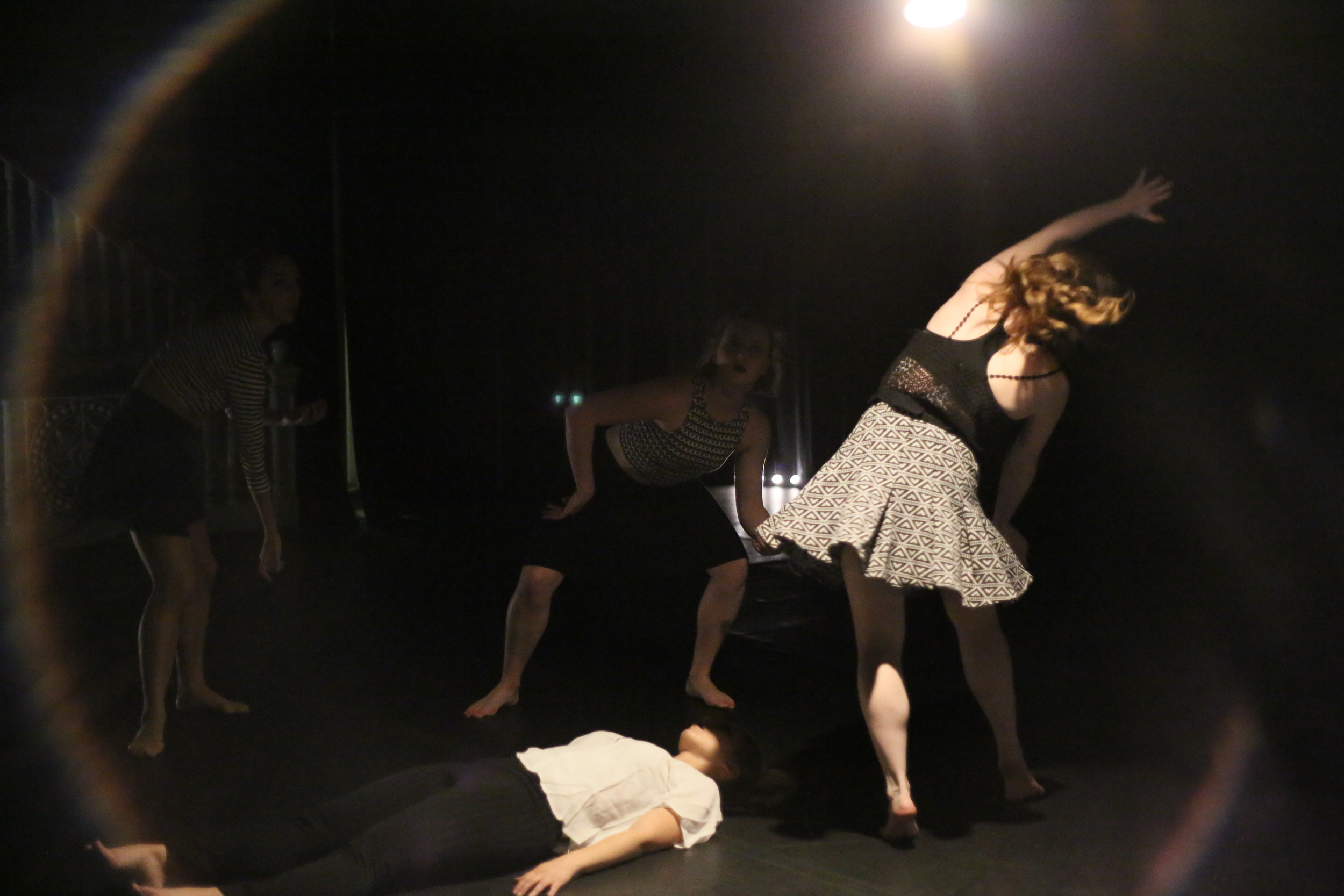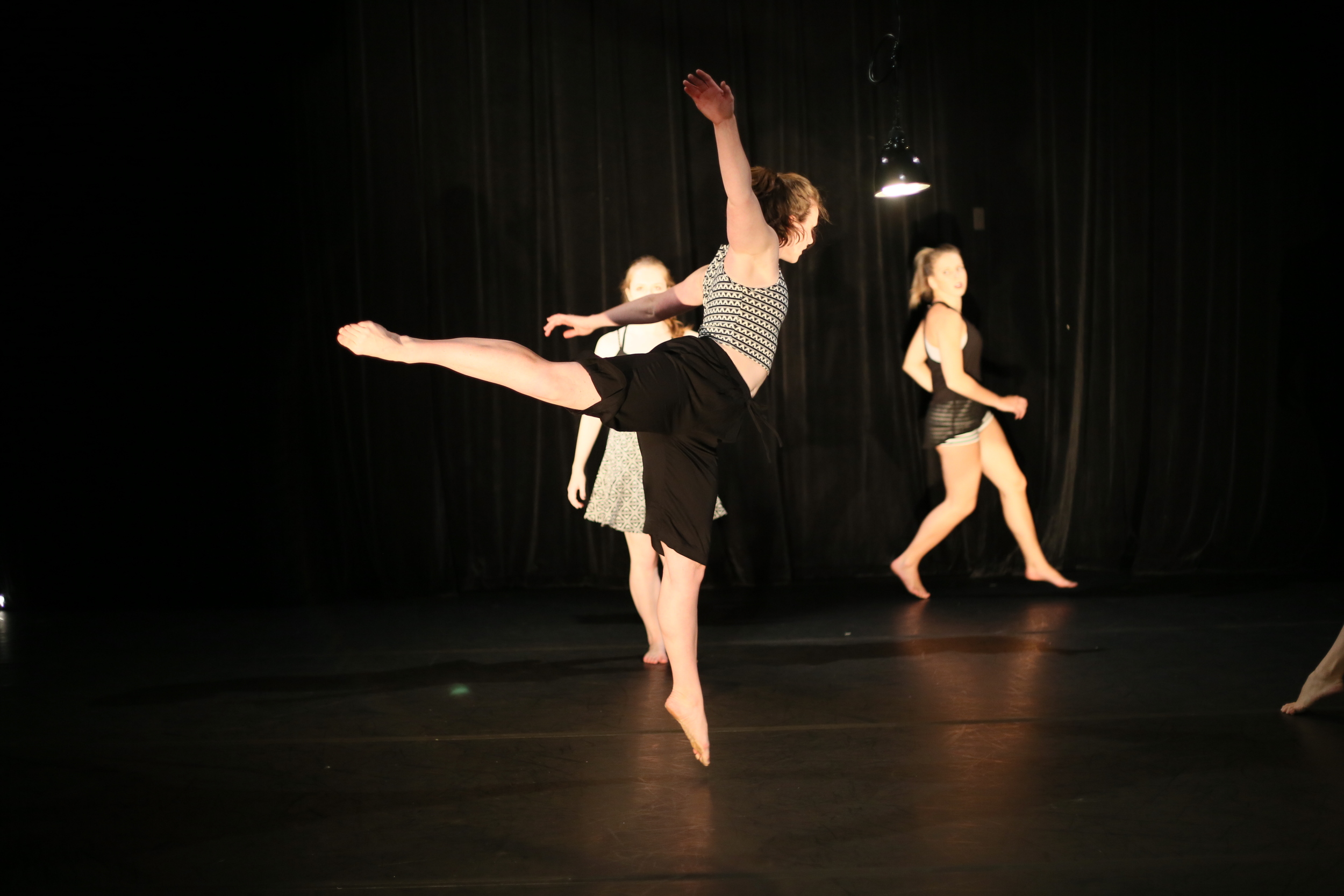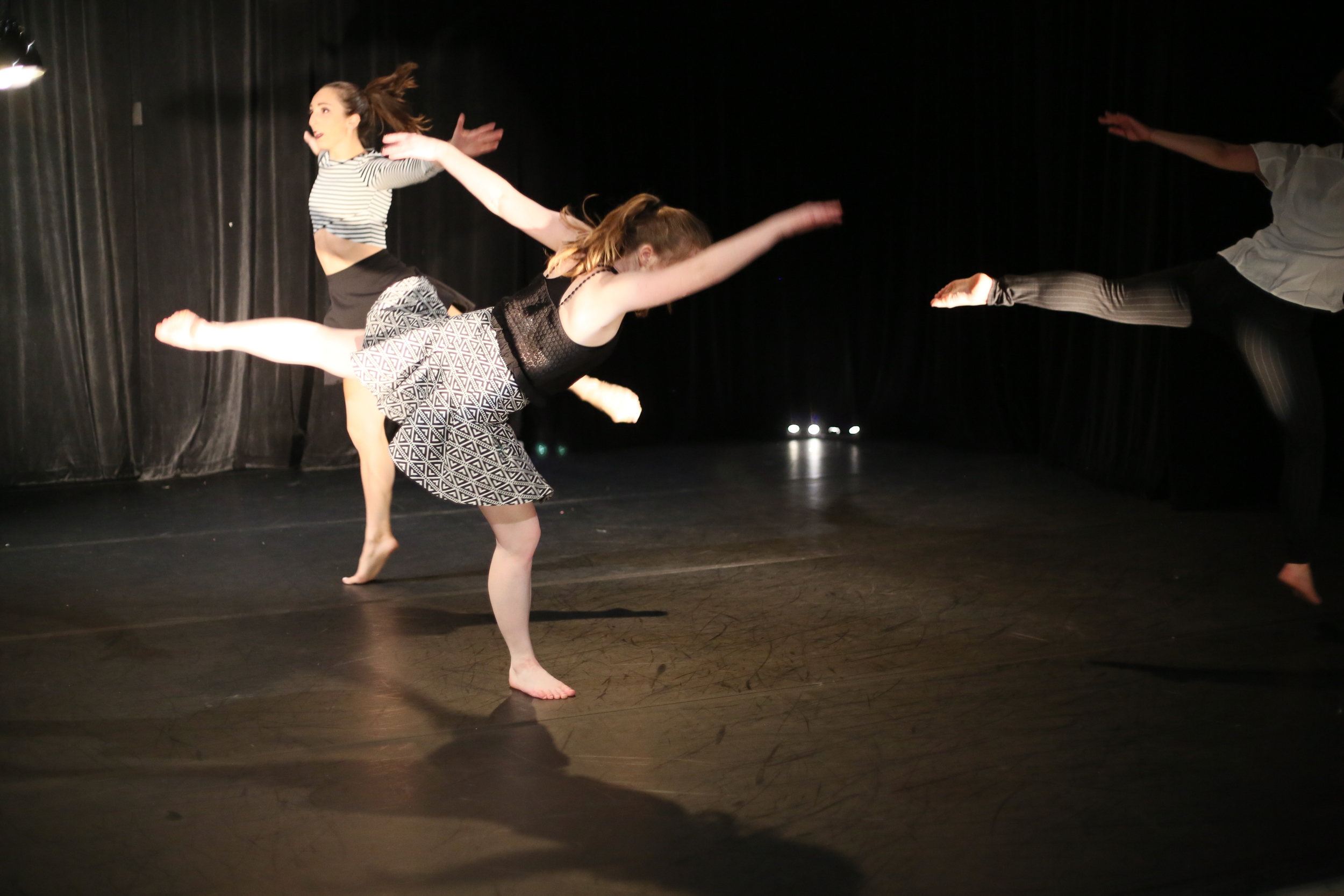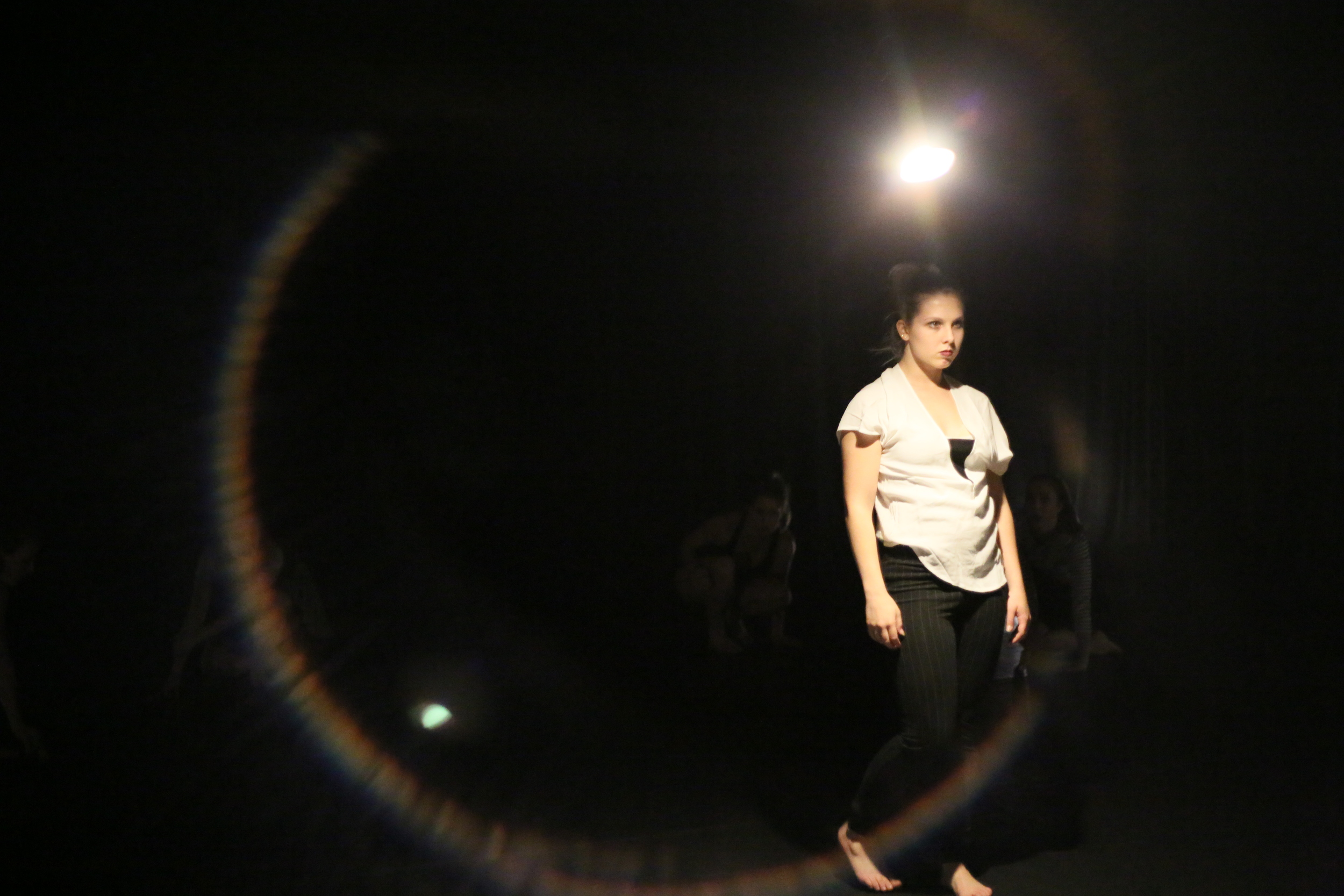A few strung together journal entries in attempts to find an ending to my newest performance-based creation.
Some time around the end of spring 2016 I decided I wanted to make something based on communication. I had a visual in my head of two active figures moving amidst a group of maybe five passive individuals that would serve to occupy space and observe, but not interact. Since August I've been working with Katie McGrail and Katharina Schier - both incredibly engaged performer/participants - to make this come to life.
As these things do, my thought has been evolving and deepening since August as the piece decides where it wants to go.
8/27/16
I’m making a piece for a November production that will be built on the idea of two dancers communicating and interacting through various movement vocabularies and physicalities. The work is currently about communication and its difficulties, as well as the management of personalities and relationship. In my thinking about authenticity, artifice and spectacle I’ve been intrigued in exploring the use of the word histrionic and its identity as a label in various contexts over time. I’m even more interested in exploring what a ‘histrionic’ movement vocabulary might look like. The work will feature two performers utilizing solo work and partner-heavy duet work in addition to an ensemble that serves mainly to watch the piece onstage since listening and observing (or lack thereof) are a huge part of communication. -From my MFAIA Study Plan
9/31/16
In rehearsals and my own thinking I am digging into how the two active performers, Katie and Katharina, are connected. On a basic level, what would happen if the only other person that you can communicate with was someone you loathe or someone with fundamental differences of opinion? Yes, we have to work to understand each other, how far should one go? How do you act when you aren’t heard (if you act)? I’m also considering communicative ulterior motive, manipulation in communication and as a device, and fluidity in self and relationship. I communicate as the person I am at present, a different person than I was in the past, so what happens if we speed transformation up onstage and the feeling between the two individuals is allowed to evolve? I realize there is a lot here, but as I explore with the dancers I think we will isolate what’s most important to the specific statement we end up making.
Since this is a nonverbal piece, amusing since it’s about communication, instead of words I am building a language from movement and interaction. Yes, dance-makers do this in most every piece we build, but I'm treating this instance differently. It’s very important that both movement and interaction are very authentic— genuinely conceived and executed with minimal superfluous choreography. Throughout the process I've made some material for Katie and Katharina that requires some form of decision making, be it in how they interact with each other, how they choose to physically absorb the material, or how they outwardly present the movement they possess.
Rehearsal footage demonstrates our beginning efforts to make movement that speaks. In Manipulation Sketch 1 I tried to make the movement dependent on the genuine interactions; the phrase can only really advance with the moments of touch and those instances are real reactions instead of purely choreography. Manipulation Sketch 2 lets the dancers rotate through a pattern of floor work, the dancer not completing the choreographed movement acts as a manipulator before rotating into the set movement, at which point their roles switch. The floor work is set in advance, the counterpart-reaction is purely impulse based. Solo Phrase 1 is an attempt at setting movement that speaks. It isn’t as partner dependent as the other two rehearsal videos, but I tried to give each action cause for happening and gave the dancers autonomy over delivery of the movement.
10/12/16
Last week’s rehearsal primarily consisted of discussion. I tweaked one small moment that was bugging me, and we joked that was all we were able to accomplish, but it was great to sit with Katie and Katharina and get their feelings, input and opinions about the piece and process. Ideas of importance are considering ways to keep the movement present and how we can prevent the pathways of risk taking from becoming stale or comfortable. Another concept to keep present are the idea of the observers joining them on stage, what does that entail and ultimately mean. The themes of surveillance, observation, and power mentioned in group study are intriguing, as are the noted moments of resonance (such as the chin tap) in comparison to their physical experiences. We danced the work one more time to cap off the rehearsal and I feel like it gained both a new dimension with additional understanding and also a sense of clarity.
The first six minutes of this piece have presented a consistent feeling through struggles with power dynamic, all considerations of relationship and tempo and I feel that it’s due for a shift. Compositionally I feel that Katharina has been pushed a lot in the beginning segment of the work and her presence needs to change. I feel a sort of defeat coming for her, a withering up of sorts, so that Katie can discover that there’s no interaction or communication without someone on the other end. Perhaps stripping some of the communication back to find vulnerability before building back into a duet will be the direction I go.



